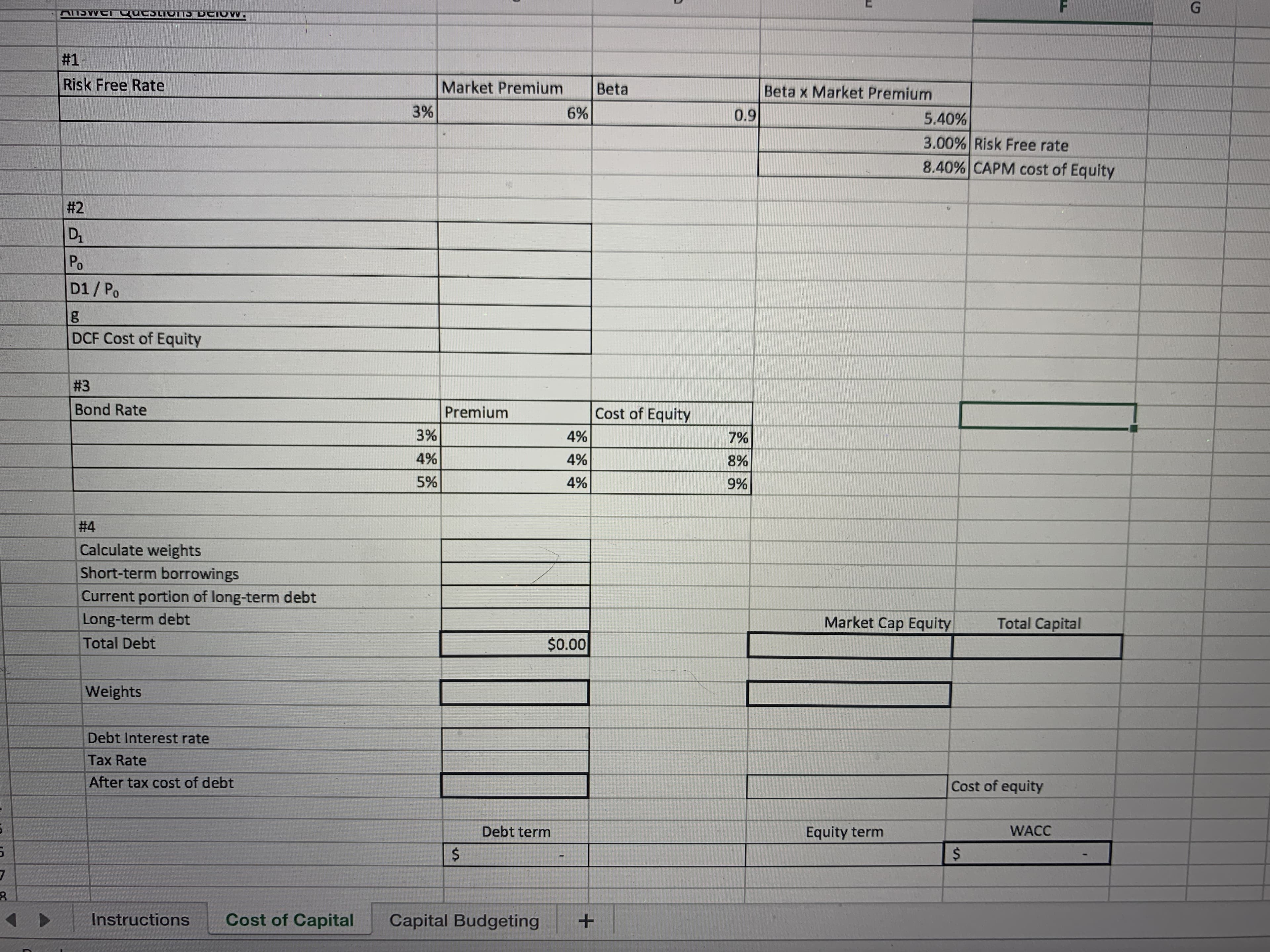You have been asked to calculate the cost of equity using the Capital Asset Pricing Model (CAPM). The CFO estimates the Beta as 0.90. Management wants to use the 30 year bond rate as the risk free rate, arguing that Investors should make long term investments; that rate is 3% today. The expected return on the stock market as a whole has been estimated to be 7%, 10% and 12% by various studies. The CFO asks that you use an expected return of 9% for the average stock. The market risk Premium (RPM) will be 6%. 9% minus 3% = 6%. Calculate the cost of equity (Rs) using the CAPM. The formula is Rs = rRF + (RPM ) x β. Rs is the required return on equity or the Cost of Equity, rRF is the risk free rate, RP M is the required stock market return in excess of the risk free rate, and β , (Beta) is the stocks relative risk. β is also described as the estimate of the amount of risk that an individual stock contributes to a well balance portfolio.
Dividend Valuation
Dividend refers to a reward or cash that a company gives to its shareholders out of the profits. Dividends can be issued in various forms such as cash payment, stocks, or in any other form as per the company norms. It is usually a part of the profit that the company shares with its shareholders.
Dividend Discount Model
Dividend payments are generally paid to investors or shareholders of a company when the company earns profit for the year, thus representing growth. The dividend discount model is an important method used to forecast the price of a company’s stock. It is based on the computation methodology that the present value of all its future dividends is equivalent to the value of the company.
Capital Gains Yield
It may be referred to as the earnings generated on an investment over a particular period of time. It is generally expressed as a percentage and includes some dividends or interest earned by holding a particular security. Cases, where it is higher normally, indicate the higher income and lower risk. It is mostly computed on an annual basis and is different from the total return on investment. In case it becomes too high, indicates that either the stock prices are going down or the company is paying higher dividends.
Stock Valuation
In simple words, stock valuation is a tool to calculate the current price, or value, of a company. It is used to not only calculate the value of the company but help an investor decide if they want to buy, sell or hold a company's stocks.
1. You have been asked to calculate the
Calculate the cost of equity (Rs) using the CAPM. The formula is Rs = rRF + (RPM ) x β. Rs is the required
2. The Discounted Cash Flow model is referred to as the Direct Dividend Model in the MBA 620 course materials. The formula reduces to Rs = (D1 / P0 ) + g where Rs is the required return on equity or the Cost of Equity, D1 is the expected future dividend, P0 is the price of the stock today and g is the expected growth in dividends. The CFO notes that the expected future dividend is $2.38 and the expected growth rate is 7%. For this calculation, please use the March 17, 2020 closing price of $138.70 per share. Calculate the cost of equity (Rs) using the DCF approach.
3. Cristina Flores is an advisor to a board member who works at a private equity firm. She has told the CFO that sophisticated investors use a quick estimate of the cost of equity. She says that the cost of equity must logically be higher than the company's debt rate. The estimate is that 3% to 5% should be added to the company's long term interest rates. McCormick & Company estimates its current borrowing cost at 4%. Make your own estimate of the relative risk of McCormick & Company. Then, calculate the cost of equity (Rs) using this "own debt plus 3% to 5%" formula.
4. Calculate the Weighted Average Cost of Capital (WACC) for McCormick and Company using the formula WACC = (WD x RD x (1-T)) + (WS x Rs)
Note that --
Rs = the cost of equity
Rd = the cost of debt
T = the tax rate
WD = Value of debt / (Value of debt plus value of equity)
WS = Value of equity / (Value of debt plus value of equity) **Note that the weight of debt plus the weight of equity must total to 100%, as there are only two components in the capital structure.**
In order to estimate the weights of debt and equity in the total capital structure, the CFO suggests using the book value of debt and the market value of equity. To determine the book value of debt, use data from the year end November 2019 McCormick 10-K. Look on the Balance sheet and add the following -- Short term borrowings, Current portion of long term debt, and Long term debt. To determine the market value of equity, use the following data: On March 17, 2020 the market value of equity (or "Market Cap") for McCormick (MKC ) - as found on Yahoo finance - was $18.42 billion. Use 4% for the cost of debt. Use 27.5% as the tax rate - an estimate of the combination of federal and state income tax rates.

Trending now
This is a popular solution!
Step by step
Solved in 5 steps with 2 images







